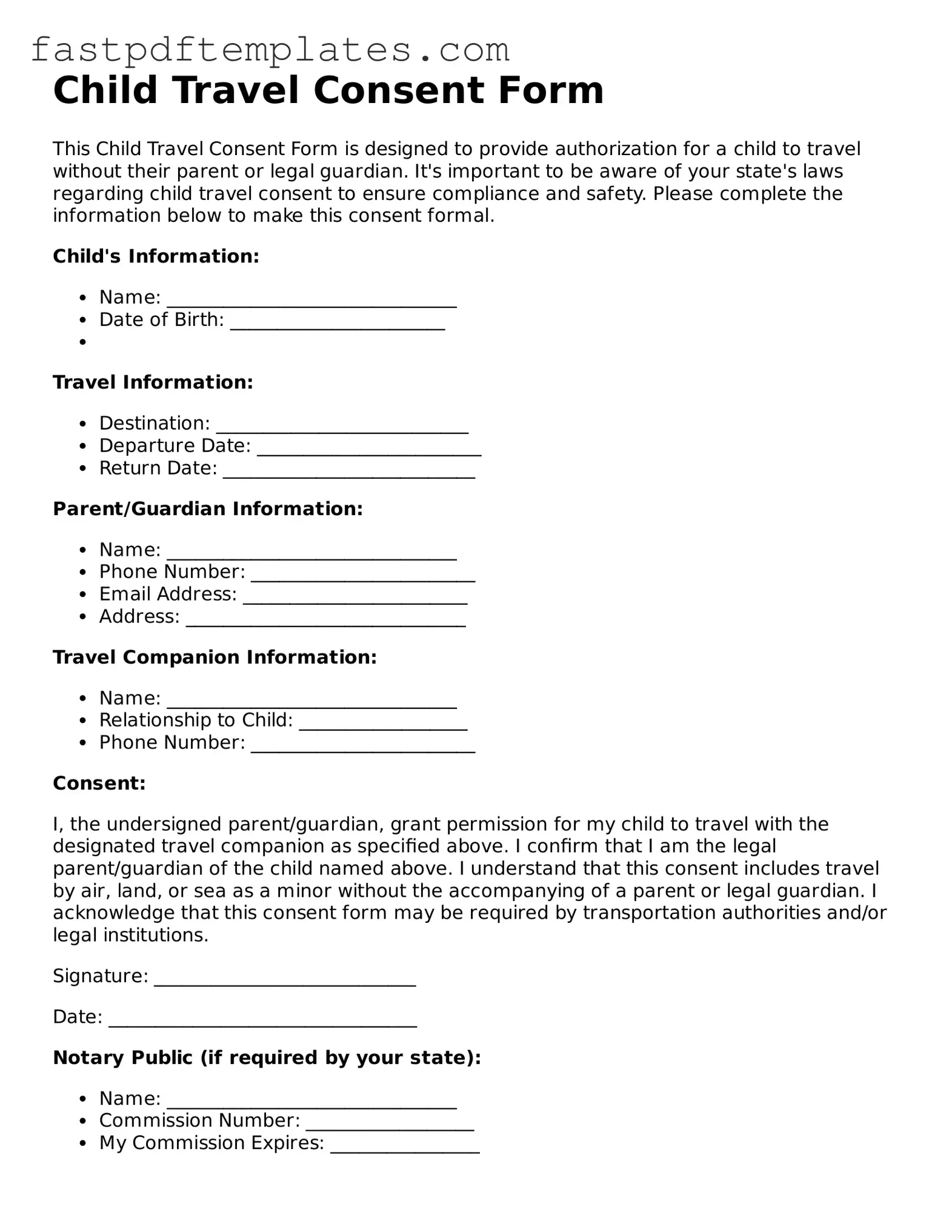Child Travel Consent Form
This Child Travel Consent Form is designed to provide authorization for a child to travel without their parent or legal guardian. It's important to be aware of your state's laws regarding child travel consent to ensure compliance and safety. Please complete the information below to make this consent formal.
Child's Information:
- Name: _______________________________
- Date of Birth: _______________________
-
Travel Information:
- Destination: ___________________________
- Departure Date: ________________________
- Return Date: ___________________________
Parent/Guardian Information:
- Name: _______________________________
- Phone Number: ________________________
- Email Address: ________________________
- Address: ______________________________
Travel Companion Information:
- Name: _______________________________
- Relationship to Child: __________________
- Phone Number: ________________________
Consent:
I, the undersigned parent/guardian, grant permission for my child to travel with the designated travel companion as specified above. I confirm that I am the legal parent/guardian of the child named above. I understand that this consent includes travel by air, land, or sea as a minor without the accompanying of a parent or legal guardian. I acknowledge that this consent form may be required by transportation authorities and/or legal institutions.
Signature: ____________________________
Date: _________________________________
Notary Public (if required by your state):
- Name: _______________________________
- Commission Number: __________________
- My Commission Expires: ________________
